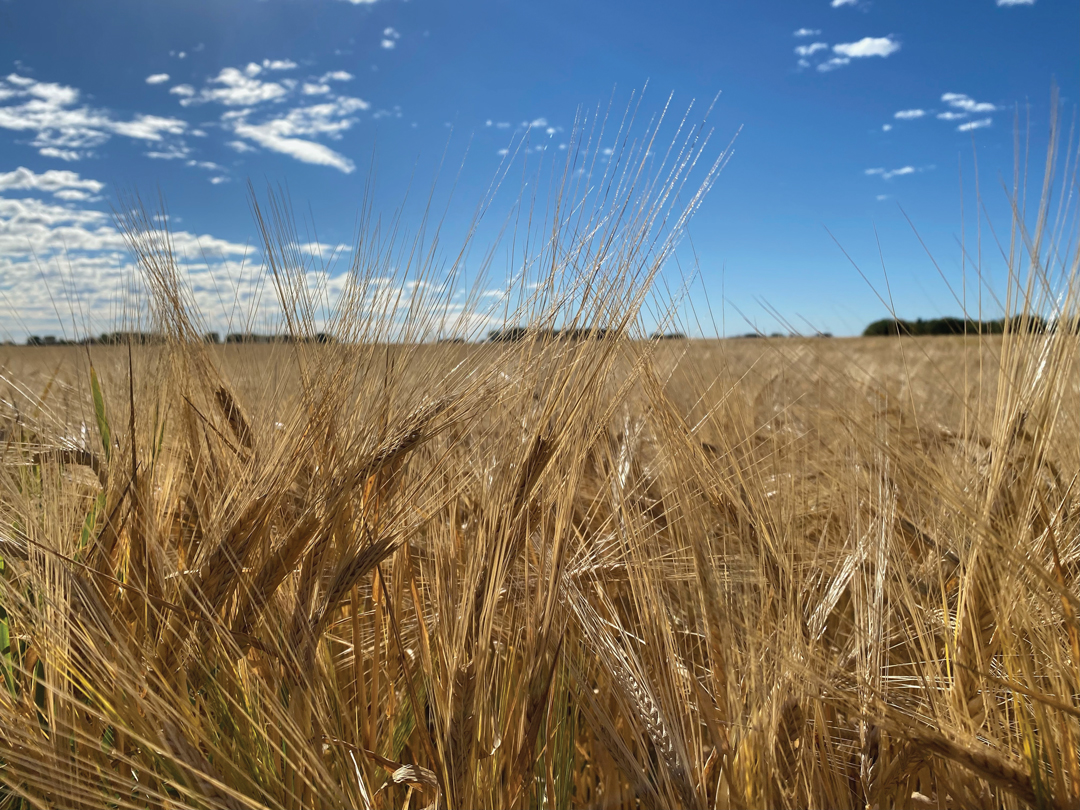PEOPLE POWER
BY JEANINE MOYER GRAPHIC BY PIXABAY
People are at the heart of every farm business. No matter the size, structure or type of farm, it’s the people, and in many cases a blend of family and employees, who manage day-to-day tasks tied to farm goals and achievements. As farms get larger and increasingly rely on hired labour, the focus on staff management processes, or human resources (HR), should expand in proportion to the size of the business.
Anita Heuver is the owner and manager of Eagle Lake Nurseries, located just southeast of Strathmore. The family-owned wholesale nursery supplies Prairie-grown shrubs, trees and ornamental perennials across Western Canada and the northern United States.
“As farmers, we rely on equipment and tools every day, but it comes down to caring for the people who operate and work in our businesses and making them part of a family of employees.”
Heuver employs up to 70 staff over the course of a year. This includes full-time and seasonal employees who manage nursery operations, tree production and field crops that include barley, corn and forages grown in rotation with the business’s mainstay products. She has seen a lot of changes since she took over the family business in the mid-1990s. Primarily, it has shifted away from reliance on local workers and word-of-mouth recruitment. The business now relies more heavily on foreign workers. Another big change has been the switch to digital management of HR records.
Throughout Heuver’s years in business, she has found it necessary to build workplace culture and invest in people. “We grow plants, but it’s all about the people,” she said. Even Eagle Lake’s mission statement—growing people that grow plants—puts the team first. To do so, Heuver relies on an HR plan that has been developed and driven by her managers in consultation with HR professional Danielle Howard.
An independent safety consultant, Howard is Certificate of Recognition (COR) certified with the Alberta Association for Safety Partnerships and the Workers Compensation Board-Alberta. “Having a systematic approach that everyone can use and rely on is important for managing employees, but engaging those employees to create the system fosters ownership and employee buy-in,” she said.
PLANNING MATTERS
In the current post-pandemic environment, lack of skilled labour has become critical. According to Viktoria Schuler, manager of HR services with the Canadian Agricultural Human Resources Council (CAHRC), the increasing labour shortage in agriculture has caused many farm employers to pivot their HR strategy.
“As farms grow, the reliance on crews and teams of people with all levels of ability increases, too,” said Schuler. “We’re seeing a shift away from HR matters being dealt with at the supper table to the development of formal plans and processes.” Schuler defines HR as having the right people at the right time with the right skillsets. It’s also about creating the right environment for them, she added. And an HR plan can be simple or complex, provided it meets the needs of the farm business and supports its overall goals.
Key components of an HR plan include recruitment and hiring, onboarding and training, performance management, compensation and benefits, compliance and safety as well as employee retention and engagement. The goal of such a plan is to help owners take a comprehensive approach to employee management rather than simply dealing with situations as they arise. Schuler noted not every farm needs to include all components of the above list. The details of an HR plan may reflect the nature of the farm operation. “Start by focusing on the areas that are critical,” she said. Drafting job descriptions and employment ads might be the first step for some farmers, while others may streamline their record-keeping process.
Whatever the size or structure of a farm may be, Schuler recommends the creation of an HR plan to formalize these elements of the business. Even when a farm is run solely by family members, relationships can be improved and expectations clarified when roles and responsibilities are defined and clarified and compensation levels documented.
The planning process can also identify areas of potential growth. Once established, the plan can be used when the family is ready to hire extra help. “When everyone understands their roles and how they relate to the business priorities, they feel safer in their family and working environment because they know what to expect, and what’s expected of them,” said Schuler.
HR TOOLS
A recent drive to improve workplace safety at Eagle Lake Nurseries prompted the enhancement of its HR plan. Heuver turned again to HR professional Howard. She worked with nursery management and staff throughout the winter of 2023/24 to update policies, protocols, training and orientation.
The result was the achievement of COR certification for the successful development and implementation of its health and safety program. To update the business’s safety and employee management program, Howard also helped Heuver develop a digital documentation procedure that utilizes Workhub24, a worker safety management app.
Canadian farms commonly outsource HR support. Companies and consultants can fill specific needs, as in Heuver’s case, or assist more broadly with the development of an HR plan. Professional organizations such as the Chartered Professionals in Human Resources of Alberta or industry advisory services can help locate professional support. Schuler advises farmers to ensure they work with someone who understands the needs of agricultural businesses. For those looking to manage HR on their own, CAHRC offers a variety of online resources. These include the popular AGRI HR Toolkit, a subscription service that offers management resources including templates for job descriptions, HR legal requirements for farms, industry specific guides and checklists.
HR can also be outsourced by individual function, such as bookkeeping and payroll as well as employee and foreign worker recruitment. Like Heuver, Schuler noted many farmers increasingly rely on the Temporary Foreign Worker Program to fill seasonal labour needs. In many cases, farmers who hire through the Program establish an HR plan driven by its compliance requirements.
Digital and software tools are also available to assist farm employers with employee records, payroll, scheduling and training. QuickBooks and Wagepoint are commonly used on Canadian farms. And for those with many employees, digital onboarding tools such as WorkHub24, which Heuver uses, can assist with health and safety training and compliance.
PRIORITIZE PEOPLE
“HR can be overwhelming, but that doesn’t mean it has to be,” said Schuler. To start, she suggested farmers prioritize what’s important to them and identify immediate needs. She added she has seen small farms develop an HR policy for recruitment, retention and compensation to position themselves for growth. Others focus on HR during their succession planning process to help define roles and responsibilities.
Heuver’s best advice to farmers is to create an HR plan that reflects the daily processes on their farm. “People are the conduit to safety, culture and success, so make them a part of the plan that they can carry out every day.”
Schuler pointed out that a structured HR approach, complete with policies, processes and documentation also contributes to the sustainability of a farm business. “Humans come first in HR, and treating people like the invaluable resources they are on the farm by creating a plan to help your people and your farm succeed is a winning combination for every farm business.”







Comments